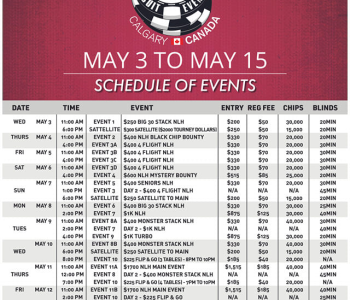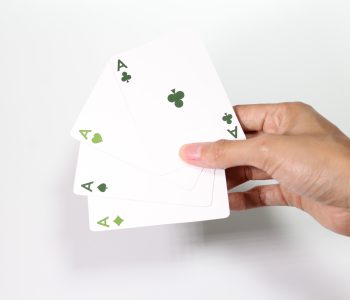
Tactical tricks in poker – types, examples with explanations
One of the tools for implementing the strategy is tactics. Unlike a strategic plan, a tactical plan cannot be drawn up in advance, since the player does not know how the situation will turn out in a given hand. However, during the game, evaluating the actions and characteristics of opponents, the composition of their own and common cards, the poker player can use one or a number of tactics that are optimal for the current situation. Poker tricks are one of the ways to increase profits and every novice player should learn how to use them in practice. According to their features, they can be divided into several groups:
Bluff
The name of this category is probably familiar to all users. A bluff is an attempt to win the pot without having a strong hand. The poker player demonstrates a strong hand with his behavior and, having misled the opponent, makes him fold and give up the pot without opening and comparing combinations. However, it is not easy to make a bluff an effective tool. Some of these poker tricks are complex and require the player to take a series of carefully considered actions, while others are easy to perform. Here are some examples of poker tricks:
Betting with a weak hand is a technically extremely simple technique – the player simply needs to bet first in order to try to win the pot. But for it to be effective, a poker player needs to take into account many factors. He must be sure that the opponent does not have a very strong combination with which it will be profitable for him to equalize the bet. The player must choose a size increase that will be unprofitable for the opponent to compare. In some cases, it is better to bet a little, otherwise the opponent will suspect a trick.
Raising is a more difficult move, as it is a return raise to the bet of an opponent who shows a strong hand. It can work if the opponent has a non-premium combination, for example – a Pair on Queens when the board is an Ace or a King. Sometimes a Raise is effective on a dangerous board to make a Flush or a Straight, as it makes your opponent believe that you have made the Nuts.
Check-Raise – in this case, the player, acting first, announces a Check, but raises in response to the opponent’s Bet. Such a technique in the game of poker is especially effective if the poker player played Check-Call in the previous auction. This line of play often accompanies a very strong hand, and many opponents are at risk of checking for a subsequent raise.
A bet-raise is a very tricky move, as the player first bets with a bluff and then responds with another bluff to an opponent’s Raise. It turns out that he is trying to deceive him again in the same auction, since the first time he did not succeed. This technique is most often effective only against those players who often bluff themselves. You should have a high degree of confidence that your opponent’s raise was also made by cheating or with a medium strength hand.
Squeeze – The performer raises pre-flop after one opponent raises and the other calls. It is quite difficult in terms of choosing the right situation and due to the need for careful assessment of the player. It comes with risk as the raise is high – convincingly demonstrating that the poker player has a very strong hand – like a Pair of Aces.
Steal – Raising from a late position (Button, Cut-off, rarely Hijack) in order to take the Blinds preflop. Produced with a fairly wide range of cards and provided that all other opponents have folded. The performer expects to take the pot easily, as the Blinds will be at a disadvantage on the Flop by acting first.
Resteal – Countering Steel from the position of the Blinds. If you suspect that the opponent is trying to steal the Blinds with a wide range of hands, the poker player raises to save his chips and take the aggressor’s bet. Usually, you should choose a slightly smaller range of starting hands for Resteal than the opponent who makes Steel.
The listed tricks in poker differ from the rest in that the player who implements them does not have a strong combination or did not make it at all. Their goal is to take the bank without opening it. If the reception does not work, the performer loses the money spent on its implementation. Therefore, it is important to be able to choose the optimal situations for a bluff so that it brings profit at a distance.
semi-bluff
You can already judge by the name that these techniques are only half deceptive. They differ from bluffs in that the player does not have a strong combination, but has a high chance of making it on the following streets. Therefore, he risks less than with a bluff. Because of this, the semi-bluff is used much more often. For example, it is an effective playing line for Straight Draw and Flush Draw.
If the player does not have a ready combination, he can calculate the chances of making it. By comparing these odds with the size of the potential win if he gets the right card, he can understand whether it is profitable to use a semi-bluff or not. In addition, he can calculate the size of the bet, which would be profitable to make in such a situation. Made in it, he gets three options for the development of events:
The player bet even more – an unfavorable option, since if the opponent’s increase is unprofitable to compare, he will have to fold;
The opponent has equaled – the poker player will make a profit at a distance, even if the combination is not made in the current hand;
The opponent folded – the player receives a win, not knowing whether the combination would have been completed or not, which is also a good result.
In some cases, a semi-bluff can be used even if you have to make a disadvantageous bet at a distance. For example, if there is confidence that the opponent does not have a strong hand and will fold with a high probability.
A particular example of a semi-bluff is a continuation bet. A continuation bet is the continuation of aggression on the flop after a pre-flop raise against one opponent who previously called the raise. Even if the community cards don’t improve the hand, a player with an effective starting card range will often end up with a stronger hand than an opponent with a wider range. There is also a possibility that the opponent made a combination, but of medium strength on an open flop, which also allows you to take the pot from him without having a ready poker hand.
Bank increase
With a strong hand, you should often use poker tricks that allow you to increase the pot. Just like with bluffs and semi-bluffs, you need to choose the best technique for each specific situation, for example:
Nuts – With an unbeatable hand, you can use the tactical line of Check-Call or Bet-Call to the River, and check-raise or Bet-Raise on the River. The opponent will build up the bank himself, which will later go to you.
Strong Hand – If the hand is strong, but the opponent can improve on the following streets, the Check-Call technique cannot be used on the Flop and Turn. This will allow the opponent to watch the next cards, making bets of such a size that is beneficial to him. Therefore, in this case, you need to either check-raise already before the River, or make a high raise by acting first. The size of such a raise should be such that it is unprofitable for the opponent to complete flushes, straights or other combinations. Playing not according to the pot odds, the opponent will be at a loss in the long run, even if he makes a combination in the current distribution.
In some cases, these tricks in poker can be replaced with a natural draw. For example, having a strong or unbeatable hand, bet the big one first. This can be an effective move if you are confident that your opponent also has a strong hand, but weaker than yours. Let’s say you have an Ace Flush, and the player’s behavior suggests that he also has a Flush that won’t fold. He is unaware that his hand is weaker on a high card and can call or raise a high bet.
Each of these techniques should be studied in more detail in order to learn how to choose the appropriate situations for their implementation. Having mastered the full arsenal of tactical tricks and techniques, you will be able to significantly increase your profits, as they are intended for this.









